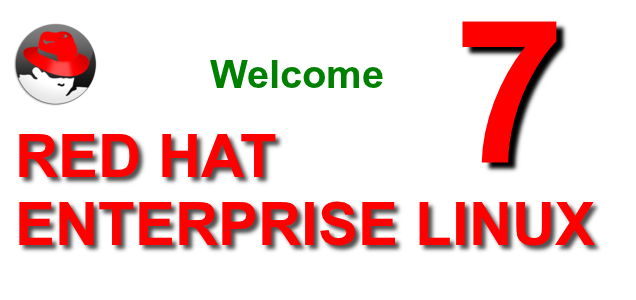Red Hat Enterprise Linux 7 has been released successfully on June 10, 2014. RHEL 7 is providing better performance and scalability. At system administrators it provides unified management tools and system-wide resource management that reduce he administrative burden.
Release Notes: https://access.redhat.com/site/documentation/en-US/Red_Hat_Enterprise_Linux/7/html/7.0_Release_Notes/index.html
Whats New in Red Hat Enterprise Linux 7:
RedHat Enterprise Linux 7 has been released with lots of major changes and migration considerations. Currently its Release Candidate version is released and we will look final release very soon. Here is some description of major changes coming in RHEL 7 than RHEL 6. This list doesn’t contain all the changes available in RHEL 7. I have tried to provide those changes details which comes general in use.
1. System Limitations
a. RedHat recommends minimum 5 GB of disk space to install this release of RHEL series for all supported architectures.
b. For AMD64 and Intel® 64 systems – Red Hat recommends at least 1 GB memory per logical CPU.
c. For 64-bit Power systems now require at least 2 GB of memory to run.
2. New Boot Loader
A new book loader GRUB2 has been introduced in RHEL 7. It supports more filesystems and block devices.
GRUB2 Configuration File: /boot/grub2/grub.cfg
3. New Init System
As we know RHEL 6 and older releases used SysV init system. But RHEL 7 has been released with new init system systemd which is compatible with SysV.
4. New Installer
Red Hat Enterprise Linux 7 has and redesigned Anaconda version. Which have many improvements in system installation.
5. Changes to firstboot Implementation
RHRL 7 replaces firstboot with the Initial Setup utility, initial-setup, for better interoperability with the new installer.
6. Changes in File System Layout
Red Hat Enterprise Linux 7 introduces two major changes to the layout of the file system.
The /bin, /sbin, /lib and /lib64 directories are now under the /usr directory.
The /tmp directory can now be used as a temporary file storage system (tmpfs)
7. ncat (Network Configuration utility) introduced
A new networking utility ncat has been introduced in RHEL 7 which replaces netcat. ncat is a reliable back-end tool that provides network connectivity to other applications.It uses both TCP and UDP for communication.
8. Released with Apache 2.4
RHEL 7 is coming with apache 2.4, which has significant changes with number of new features.
9. Chrony – A new Package Introduced
Chrony is introduced as new NTP client provided in the chrony package. Chrony does not provides all features available in old ntp client (ntp). So ntp is still provided due to compatibility.
10. Introducing HAProxy
HAProxy has been introduced in RHEL 7. It is a TCP/HTTP reverse proxy that is well-suited to high availability environments.

8 Comments
Nice Explnation 😀
usefull but more key points are left..
Nice points, Thanks.
Thanks a lot , it was very useful .
Nice post, but also a lots of typo, please try to check your writings before publishing.
Appreciate him ,instead of finding mistakes…
Well Written, much easier than going through the PDF file available on Red Hat website. Thank you!
Nice points… Thanks for sharing….